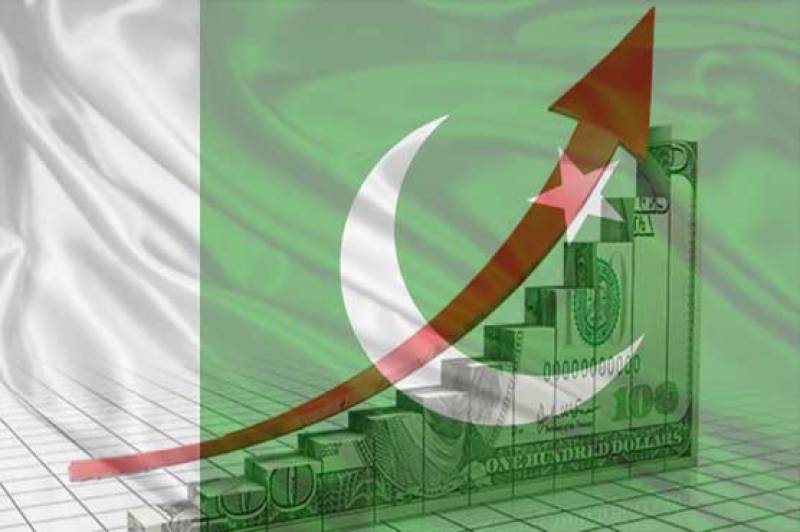Pakistan, being a low-income entity was showing signs of mild economic improvements prior to the Corona Virus pandemic and inflation was expected to stay at a single digit deficit after soaring to 7.3% in 2019; as stated by Economic survey of Pakistan, 2020-21. With the spread of Covid-19, China had to restrict its trade which was mostly directed at Asian countries.
Pakistan’s already fragile economy had only just been moving towards stability and was showing positive signs. I t was the last when the novel COVID-19 jolted the world. It put whole world on a stand still. It is when the health crisis struck. Experts fear that the pandemic’s economic fallout will considerably derail the country’s recovery process.
COVID-19 indicators in Pakistan are showing a gradually decline in Pakistan. With the exception of large indoor gatherings and activities, social and commercial lockdown has been lifted in Pakistan. Educational institutions have opened in a progressive manner with SOPs in place. Restrictions while traveling by train and airlines are partially lifted since 1st October. However, tight SOPs will be in place.
Ray of hope for Transportation sector:
The transportation sector of Pakistan accounts for 12.89% of the GDP and 5.7% of the national labor force whereas the textile sector contributes 8.5% to the GDP and 56% to the total export basket which has all started to shrink ever since the novel Corona virus struck Pakistan in March 2020.
Boom of the construction sector:
The State Bank of Pakistan in collaboration with the Naya Pakistan Housing & Development Authority has announced an allocation of PKR 33 Billion for payment of markup subsidy for financing aimed at construction and purchase of new houses. The banks have reported an increase in fresh financing in September 2020 after successively receiving back loans from borrowers in the past three months. Banks shows an increase in total lending with growth of net 0.5%. The increase in terms of numbers is PKR 41.20 Billion to PKR 8.09 Trillion in September compared to PKR 8.05 Trillion in the previous month.
The Investment Banker and risk analyst Khurram Shehzad expects Pakistan’s economy to shrink by $15 billion by the end of the year 2020. He has also predicted a 10% decline in the GDP growth by the end of the fiscal year 2020-2021. He explained “Complete or semi-lockdowns can result in no real GDP growth for or over 2% negative growth in FY-2020, spreading over to the first quarter of the financial year 2020”.
The automotive and the new corridors in LNG sector:
According to the Pakistan Automotive Manufacturers Association (PAMA), car sales rose by 18% to 13,882 units in September 2020 compared to 11,724 units in the same period of last year. The ‘World Economic Outlook’ report by the International Monetary Fund (IMF) predicted a bleak outlook for the Pakistani economy, asserting that it would only grow by 1%, inflation may cross above 10% and unemployment rate could further jump by the end of the current fiscal year.
Pakistan has decided to open up the LNG market for the private sector for the first time in its history. It is going to be open to local investors by November in an attempt to reduce financial risks for the government. It will help boost and enhance gas supplies during the winter season. The private sector will be authorized to import LNG from November 2020 to February 2021.
Gwadar: A golden piece of cake
The government has approved the new Gwadar International Airport project at a cost of PKR 55.4 Billion around 147% higher than the first cost revision. Overseas grant funding for the project comes from Oman (US$ 17.5 million) and China (1.67 Billion Yuan). The share of Chinese grant in the total construction cost is 63.3%.
A recent survey by Islamabad-based international research organization; Gallup found that Pakistan’s unemployment rate is predicted to surge to a whopping 28%. A 30% layoff in the formal sector is also projected due to a prolonged lockdown, resulting in a 189 billion rupees’ impact on the private sector, Shehzad explained.
On the other hand, the country’s Prime Minister; Imran Khan took his official twitter handle to congratulate the nation on the economic front. He says, “Great news for Pakistan. We are headed in the right direction. Current account was in surplus of $73 million during Sept, bringing surplus from first quarter to $792 million compared to deficit of $1,492 million during same time last year. Exports grew 29% and remittances 9% over last month.”
Government and small level businesses:
The Pakistan’s government imposed smart lockdown and then micro smart lockdown in order to give support to the derailing economy and the labor sector. In support of very small business and low-income individuals, the State Bank of Pakistan (SBP) has enhanced the limit for housing finance and microenterprise loans to PKR 3 million from the existing PKR 1 million for borrowing from microfinance banks.
During the first two months of the current fiscal year 2020 (July and August) FDI has increased by 40% from US$ 162 million last years to US$ 226.7 million this year. Financial businesses attracted the largest net FDI of US$ 61.5 million in Aug 2020, followed by oil and gas exploration at US$ 17.3 million and telecommunication at US$ 15.6 million. Large scale manufacturing (LSM) output posted a rebound after months of decline inflicted by COVID-19 as it grew by 5.02% in July 2020.
Overseas Pakistan’s remittances in the first two months of the current FY2020 increased by 31% to reach US$ 4.86 Billion from US$ 3.71 Billion in the same period last year. The remittances from overseas Pakistani’s rose to US$ 2.3 Billion in September 2020, 28% higher than September 2019 and 9% higher than August 2020.
Who holds the key of Pakistan economic cage?
The International Monetary Fund IMF’s managing director has said that the Corona Virus pandemic will push the global economy into the deepest recession since the Great Depression and the most affected would be the low-income economies like Pakistan.
Considering Pakistan’s limited financial capacity to bear the costs of the pandemic, experts warn that the country may in the future require assistance from not only the IMF and the World Bank but also from strategic allies like China and Saudi Arabia.

The author is doing M. Phil in Public Policy and Governance. He is working as a freelancer. Previously worked with HubPages and Washington Post.
